Good versus bad art is a dichotomy, that need not be played off against one another. But we all do play them off against each other in practice: in how we choose to exhibit or not exhibit pieces and how we spend institutional funding, taxes, and our time. A sense of worthwhile, memorable, pleasurable, meaningful, insightful and exciting art by definition relies on the relation to what we find a waste of time, forgettable, displeasurable, obtuse, and irrelevant. Much as truth, Bertrand Russell says, can be seen as arbitrary only when its polar of falsehood is conveniently overlooked, a notion of those good adjective sets has always been—and will always be—around to contrast the bad adjective sets. For instances of falsehoods and truths are analogus (though of course, not the same) to instances of bad art and good art, or non art and art. In some academic circles, it is common to accept that truth is based on our frame of understanding or that there is no truth at all; those circles ignore that the use of the word ‘truth’ even in reference to it not really existing gives credence to the pervasive real idea of truthfulness. Claiming, there is a nonthing that must be proved to be a nonthing; and overlooking that saying ‘there is no truth’ or that ‘there is no believable authority’ requires claiming those are either truthful or more valid statements—a contradiction. A contradiction mocked as early as Socrates in Plato’s 2400-year-old dialogue, The Theaetetus.
I conflate the question of good versus bad art, and truths versus falsehoods here because they are connected. Beauty and art definitely exist by examples of beauty and art compared to examples of ugliness and nonart. The old-fashioned deference to the authority of experts and the brilliance of Beethoven interlink; as does the new-fashioned popularity of cult movie The Room interlink with the irreverence for authority, experts, and intellectually challenging art. As an advocate of camp taste—so-bad-it-is-good film, theatre, lamp-design etcetera—Susan Sontag declared in the afterword to her landmark 1960s essay collection ‘Against Interpretation’, that “the judgements of taste expressed in these essays may have prevailed. The values underlying those judgements have not”. While Sontag endeavoured to open up culture reception and widen the palate of the mass audience and critics, the anything-goes or whatever-you-want approach to art appreciation and values she never did intend to advocate; “there is a hierarchy”, she says, and if choosing between Dostoevsky and The Doors for a university course ever happens, then Dostoevsky ought to win. Because Fyodor Dostoevsky does more, has done more, and is more substantial. Sontag said thirty years later that:
The undermining of standards of seriousness is almost complete, with the ascendancy of a culture whose most persuasive, intelligible values are drawn from the entertainment industries. Now the very idea of the serious (and the honourable) seem quaint, “unrealistic”, to most people, and when allowed—as an arbitrary decision of temperament—probably unhealthy too.
It is no coincidence, then, that the common thread to all so-bad-it-is-good art is humour: it is art that fails its aim so is humbling and validating to watch; art that is artificial and exaggerated to the point an audience is conscious of the ‘off’ or ‘weird’ which creates humour out of juxtaposition, between ought and actual, and between the expected and the surprises of irony and absurdity. In a way this gives an audience the liberating pleasure of feeling they are an expert—“even I could do better!”
With accepted—good because it is good—art the method and construction requires focus to avoid immersion within the pleasurable and persuasive experience of its artform. Whereas the offness of ‘10 Best Worst Films I’ve Seen’ draws attention to the experience and an irony of beholder experiencing differently to what is intended by the artist, or is even decipherable by the critic. For instance, watching pornography without lust or enjoying a drama for comedy, or having a flourish of manner far out of the norm. So-bad-it-is-good-is good phenomenon words are caught in quotation marks, framing with happy cynicism—art as ”art”, and taste as “taste”, beauty as “beauty”. This stresses the construction of works and our participative appreciation, style, uniqueness, and the role of art appreciators as fellow performers in any art performance. (As tellingly popular in the individualised phrase, “the eye of the beholder”). Be it in theatre, film or joking by going off script in, say, a socially-scripted date scenario: visiting an Owl Sanctuary together, instead of the compulsory “let’s get coffee” (X) or “drinks” (Y), or “brunch” (Z).
Bad-good taste is a way to assert a reciprocal rather than consumerist relationship with the artwork—one any audience can deal with and belittle because it is silly, frivolous, and humorously underwhelming rather than serious and therefore too overwhelming for any putting in its place desired by the power-hungry consumer groups of, say, cult film, or avant-garde theatre. Because cult audiences evaluate being better-than by being different-than. Experiencing bad-good art sets the art and group of consumers within their own terms; the enjoyment is from being exclusive, unique, esoteric rather than roundly grand, impressive, or moving. Hence hipster fashion, everyone. Take vintage ‘fashion’ – it is going against the grain even as it creates a new grain, by clothes mismatching the era—even to label it “fashion” betrays the implicit aims of bad-good clothes, clothes which are defined by being bad to many, but precisely because of that are good (in a good-bad way) to the fashionable, esoteric, few who fashion their selves as ‘alternative’ by reliance on a norm, against an original precedent.
Good-bad taste is akin to camp taste, and of camp taste Sontag says, “camp is a vision of the world in terms of style—but a particular kind of style. It is a love of the exaggerated, the “off”, of things-being-what-they-are-not.” Wearing clothes against the norm, defying gender obligation, enjoying guilty pleasures, and being part of something by not being part of much else, is key to the enjoyment of so-bad-it-is-good art.
The middlebrow culture, identified by historian Susan Jacoby, of the nineteen fifties normalised differing opinions, and made-widespread the belief that opinions came from inside each individual eye preference, “the eye of the beholder”, rather than in a relationship between the object and the eye where the object has as much of a role as the eye – even more of a role, in fact. Curiously, this individualisation of aesthetic experience and misuse of democratic opinion compromises the best interests of the many: the relativity of ‘the eye of the beholder’ enables the creation of omnipresent urban buildings and neighbourhoods uglier to the majority of beholders than their declared preferences. For instance, for more green space, more Golden Ratio classical buildings, and fewer walkie-talkie styled monstrosities which advertise the London cityscape as a bad, and irreparable, joke.
Just because value-judgements of taste vary, does not mean there is not enough consensus for democratic aesthetics that in some ways aligns with the nature of the human world as it is and as we biologically are, rather than as diverse humans decide it to be by chaotic chance, social contingency, which is more of a habit, anyway, than a decision. And though polarities of good and bad, art and non-art, beautiful and ugly, can be limiting (hence the popularity of the so bad-it’s-good paradox) there is a statistical distinction and by nature difference between aesthetic experiences we intuitively know, but declaringly overlook. As is proven by absurd – therefore revealing – comparisons of scale, colour, objects, functions and so on:
Niagara Falls is more of an aesthetic experience than seeing the inside of my fridge.
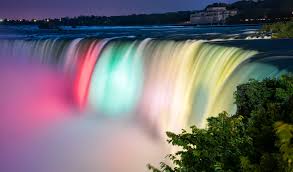

A rose is prettier than toilet paper.
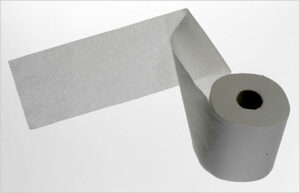

A basil plant is prettier than rotting cow flesh.


Venice Italy is prettier than Hull Yorkshire


The local co-op building is mathematically uglier than Chartres Cathedral


Photos that are properly edited to be symmetrical and coherent are less bothersome than these mismatch photos – would you say that was too subjective for me to worry?
Swan Lake is prettier than a tambourine beat of every, say, 10 seconds
John Milton is a better poet than me.
No way can I willingly demonstrate.
Jimi Hendrix is a better guitarist than me.
No way can I willingly demonstrate.
The Beatles are the most impressive band:
They had the most variety of genres, the most stylistic and technological influence, and the highest sales in the world.
A pro performance of Michael Frayn’s Copenhagen is better than an amateurish Moose Murders
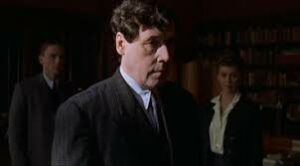
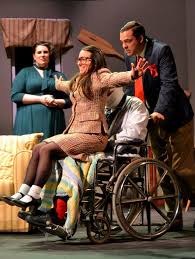
Even literal taste is not freely subjective but bounded, because we cannot choose to prefer lemon sorbet over chocolate ice cream—our taste buds decide for us, either way, and most will like chocolate because of biological norms. Contrary to the common phrase “taste is relative”, without any system to it or coherence or worthier choices; we consult approved recipe books and peer-reviewed restaurants because we have faith in precise aesthetic assessments which, while not taking the majority value-judgements as God’s truth, as truth for each individual always and everywhere (unwise and near-fascist)—we are still willing to rely and invest in them. We do all the time. Afterall, it’s all the data we have to work with.
In studies by evolutionary psychologists, it has been shown that children naturally appreciate landscapes, both painted and geographic, with plenty of markers of easier survival like water, fertile land, cattle. Safe to assume they appreciate that over a blank wall, or aridly featureless desert.
There are so many nudes in art, and humans as subjects, because beauty and interest are not arbitrary, but present in a recurrent human appreciation of human bodies because of sexual selection.
A few hate music or get no pleasure from it – including Sigmund Freud and Vladimir Nabokov. Contrary to being an arbitrary aesthetic preference though it was probably because of the objective composition of their rare brains—most probably a condition, still studied, like melophobia (fear of music) or musicogenic epilepsey (mild seizure induced by music).
Some phrases are remembered not because of aesthetic preference but aesthetic, simply good, rhetoric: “Bond, James Bond” or “to be or not to be” are more memorable than “John, Smith” and “should I die or not”. Rhetoricians have known that for thousands of years; this particular repetition technique is called Diacope. True, this takes place in a system of language but that system transubjectively exists and has good, memorable or impressive, uses.
That these phrase patterns are more effective than others (more remembered, more enjoyed) is some evidence there is something in it more than arbitrary preference, or individual chance response, or mere whim. And to argue that such cannot be proved outside of language systems: is to claim that from within the language system criticised; claiming it in words. And words are not everything, be it scale, colour, proportion, human rhetoric patterns, biology. These are not merely described by words, but happen by part-ineffable nature. That parts of the brain must prioritise other functions than language—our thousands of tastes, for example—proves such is true.
Goodfellas is better than Sherlock Gnomes (or The Room)
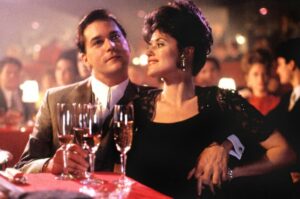

In graphic art, a painting with nothing on it for example – a blank canvas, will have less effect on the brain. Fewer patterns (without a narrative) then would have less effect then more patterns (even more with a narrative). Does it really qualify as a painting without those effects? To me, no. John Cage’s music of silence is bad music – if you want to get pleasure from notes as most do, but if you want to make a point about music it is good; but for that only. Music is organised sound, not just sound and certainly not no-sound. And contrary to the opinion that music is what you decide, more organised sounds are more musical: your heartbeat alone, for instance, would by no sane person be considered music, nor the sounds of these read words be music or the sound of a building construction be music. Although such sounds have been sampled for unpopular tracks. Somehow Morrissey’s Meat Is Murder, with slaughter sounds, didn’t catch on at parties quite as much as How Soon Is Now with its endless riff.
The paintings George Bush Junior does of his dogs, or the drawings children do for the family fridge are forgettable compared to the eye-trick smile indeterminacy of Mona Lisa and the loneliness representing paintings of Edward Hopper.


These comparisons and shoddily-stretched picture are vulgar and absurd, and some would say mistake art for entertainment, or values pleasure over edification, the majority over the minority. But that they are vulgar and absurd proves there are standards and some indisputably objective nature involved in our aesthetic judgement. Not chance based widespread standards and preferences, then, but adherence to pleasure, catharsis, meaningful representation. And there is no escaping the notion of representation, even in abstract art the abstraction represents the emotional states it arouses.
Therefore the accepted ambiguity of “oh, it’s so subjective, art!” ought not to stand. It is a phrase that has become fashionable only in our particular slice of time. A time which claims to be enlightened, better than the barbaric past, yet ironically accepts relativism at the same time—and sees art appreciation as mindless magic, “I like what I like; I don’t like what I don’t like and that’s that”. As biological anthropologist Ellen Dissanayake argues in her wonderful Homo Aestheticus, we humans inevitably do art and there is nonrelative coherence to what art and beauty is compared to nonart and ugliness.
To some degree the pleasure of these comparisons above—normatively—are objective in the sense of being quite independent of desires, bias or prejudice. For if we choose to prefer Sherlock Gnomes to Goodfellas, or choose to prefer toilet paper to a rose for aesthetic experience that is normally an impossible choice to enact, and actually feel. For those who manage to achieve such wishes automatically, say, they have been the animators of Sherlock Gnomes or are designers of toilet tissue, it is astonishing and deemed unique to them. And, anyway, is not truly a choice nor a wish but self-interest and sentiment. Preferences come from causal reasons, not because of individual fancy for liking one object over another ‘just because’ or that there is, as often said, “no accounting for taste”. There is more accounting than we credit.
All this considered then, so-bad-it-is-good art does not refute seriousness, good art and the impressive or sublime; rather than serve to undermine genuine art for whatever some people will give their time to, that so-bad-it-is good is defined using the words ‘good’ and ‘bad’ rather than ‘alright’ shows it isn’t that people who coyly celebrate such art are midling or truly reject standards or hierarchy, but instead they depend on them, albeit messily, for their very existence, and ironic enjoyment. For taboo, absurdity, and easy audience’s criticism requires standards to transgress, and to know the good necessitates familiarity with the bad; comparing underwhelming failed affect (X) to the overwhelming successful affect (Y) on beholders (Z) allows fairer more critical judgements of all, X, Y, Z, than viewing in single, isolated and therefore dubious judgements where anything-goes value choices may seem (do seem, apparently) all-too-plausible.
Beholders must, inevitably, orientate themselves, their group and their values within their environment and navigate learned standards (culture) and the facts of the external world and biology (nature). A deference for so-good-it-is-good art ought to be as validly and proportionally represented as so-bad-it-is-good. The absence or lack of recognition for the former art in clickbait is telling. It shows that good art and its standards are roundly accepted, needing no commentary, and therefore good over bad is less questioned than common relativism and media would, might at first, have us imagine.

